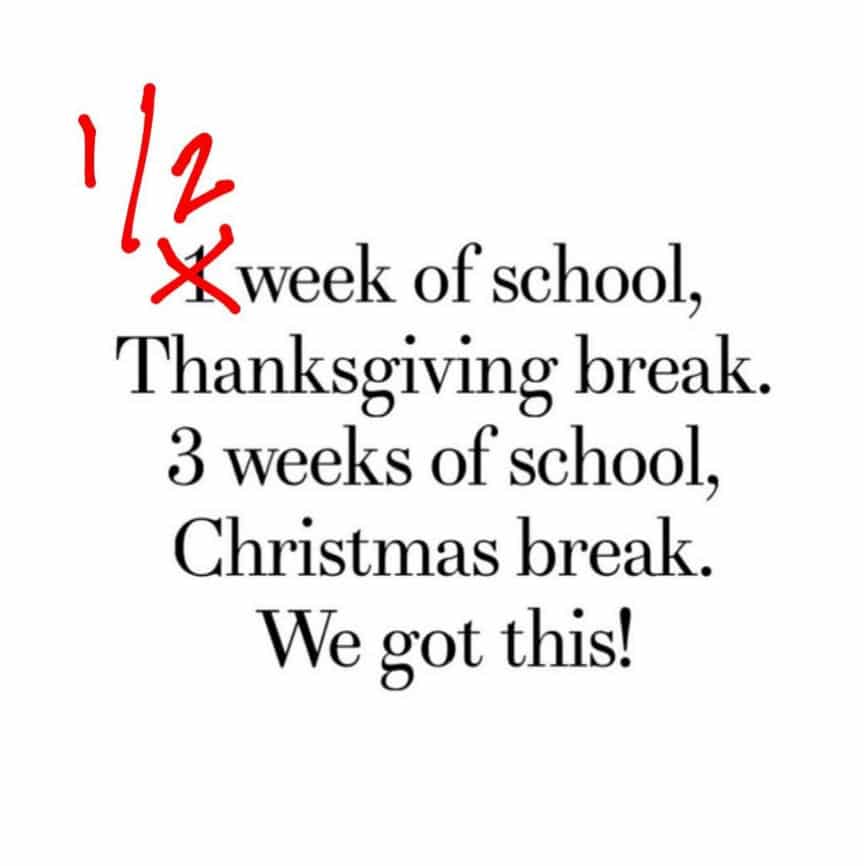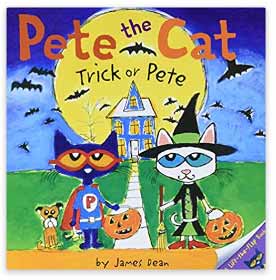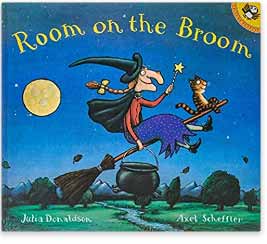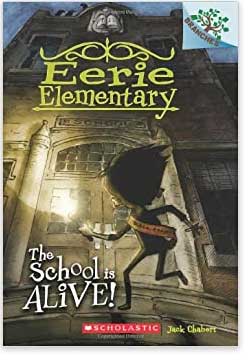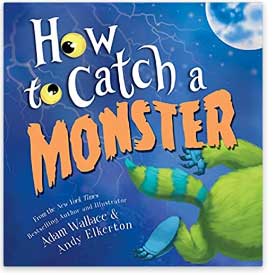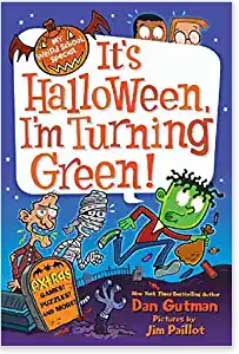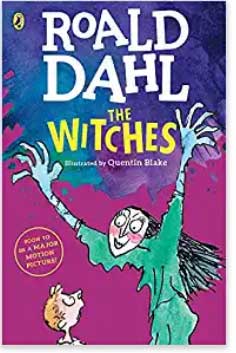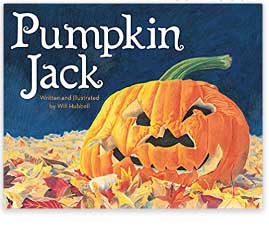
by California Casualty | Educators |
It’s nearly the holidays, and in classrooms everywhere, students are “bouncing off the walls” with excitement. It’s one of the most challenging times to keep young minds on task. But it’s not the only time. After the holiday break, the long winter months loom ahead. When students are cooped up, and darkness descends early, this is another difficult time to teach.
Here are some tips and tricks that have been used successfully by veteran teachers. Try these creative ways to keep students engaged before the holiday break and during the winter months.
Tip #1: Choose seasonal content and themes.
You don’t have to ignore the holidays in order to teach quality content. In fact, acknowledging them lets you in on the fun. Choose holiday-themed books for literature circles, and writing prompts that spark imagination like this primary grade example, Trapped in a Snow Globe. In social studies, introduce diverse winter holiday traditions from Christmas to Hanukkah, Diwali, Kwanzaa, and more. Focus on common themes of family, sharing, and light. In math class, challenge students to budget and “buy” items for the holidays. Extend seasonal themes into the winter months by inviting your students to study the geometry of a snowflake, write a poem about snow, or research its insulating power. Don’t forget, decorate your classroom for your winter-themed lessons!
Tip #2: Add a seasonally-themed reward system.
You have your year-long reward or incentive system, but during the holidays, consider including an added incentive to keep students focused. Reward good behavior with snowballs (cotton balls). Students place them in a jar, and when it’s filled, the class earns a hot cocoa break or extra recess time. You also could hold a holiday raffle using items from the dollar store. Reward good behavior with raffle tickets and a chance to win. Importantly, don’t ditch your primary reward system. Think of this as additional positive motivation.
Tip #3: Introduce new experiences and activities.
Grab students’ attention with an experience or new activity. Scavenger hunts and escape rooms are engaging games that can be used to review curriculum content. Plays and skits developed by the students are great vehicles for learning. Google’s 3D animals can bring the zoo to the classroom. Presentations created with shared Google slides reinforce digital literacy as well as core content. Invite a guest speaker to talk to students about a topic they are studying. These new and exciting activities will help focus students during the busy holiday season and the long winter months.
Tip #4: Get students moving and out in the sunshine.
Part of the challenge of teaching during the winter months is that everyone is cooped up inside. It’s tempting to fall asleep or lose focus in a warm, comfortable classroom. Lessons that get students up and moving will keep them energized. Set up stations around the room and have students circulate. Post student work on the wall and do a gallery walk, where everyone can review it. This works especially well for group projects and posters. Schedule time outside so students can soak up some sun, which helps to combat Seasonal Affective Disorder (SAD). Bundle up, and make an outdoor excursion a regular part of your week.
Tip #5: Create engaging lessons.
This is the time of year to pull out the most popular lessons—or create new ones. Think about hands-on lessons that extend beyond the textbook, such as STEAM activities that stretch young minds and are truly engaging. Build a snowman out of toothpicks and marshmallows. Build a snowball catapult to launch marshmallows. Ask students to design their own toys. Incorporate sensory elements such as writing in shaving cream on their desk. Analyze the phases of the moon through Oreo cookies. Being able to eat the project afterward is a definite bonus!
Tip #6: Incorporate service learning.
The holidays and winter months are ideal for community service projects. Consider a class project that incorporates the curriculum but also gives back to those in need. Partner with a nonprofit in your community. Chances are they would welcome the help with fundraising, awareness, and more. Fundraising projects involve literacy, math, and art. Awareness campaigns can help students build research and presentation skills. Service-learning promotes teamwork and provides students an opportunity to create meaningful change.
Tip #7: Keep it consistent.
The holiday season can be especially disruptive for teaching. Holiday concerts, special activities, classroom celebrations, and school breaks make classroom time feel disjointed. That’s why it’s important to stick to the routine as much as possible. Do what you can in the classroom time allotted. Importantly, don’t try to cram things in before the holiday break. Give children the time to learn and the space to learn it consistently. There will be plenty of time during those long winter months. Thankfully, we add a couple of minutes of light each day following the winter solstice, December 21. That means spring can’t be far ahead.
Do you have a tip that isn’t on this list? We’d love to hear it. Share it with us and other Educators in the comments.
This article is furnished by California Casualty, providing auto and home insurance to educators, law enforcement officers, firefighters, and nurses. Get a quote at 1.866.704.8614 or www.calcas.com.

by California Casualty | Educators |
If you’re a teacher, chances are you’ve gotten your share of apple-themed gifts—and probably more than a few shiny red apples. In honor of National Eat a Red Apple Day, December 1, let’s explore the history of how the red apple became the iconic symbol for teachers everywhere.
Education for Apples
Early on in the U.S., teachers were housed, fed, and paid by the community in which they taught. Poor families who could not afford the teacher’s low wages would pay with produce. The early apples were bitter, sour, and smaller than the ones we’re used to. But apples were popular because of their bartering value. They could be made into hard cider, considered safer to drink than water. Apples also could be eaten fresh, fried, stewed, and baked. They could be made into vinegar, brandy, preserves, and apple butter. They could be dried for the winter and eaten year-round.
Years later, after Prohibition, apples started to become marketed as an essential part of a healthy diet- hence the term, “an apple a day keeps the doctor away”. Apples were still being given to teachers, but this time from their students.
The first day of school occurs near the beginning of September, coincidentally apple harvest time. Apples grow in every state in the continental U.S. They’re cheap and pretty, especially when they are buffed until they shine. That made apples the ideal first-day teacher gift. It was a way for students to show appreciation and get the year started on the right foot with a sweet, and healthy treat for their teacher.
Today, there are foundations and awards for educators, like the Golden Apple Foundation. Apples continue to decorate classrooms and hallways. Apple mugs, earrings, shirts, ties, notebooks, etc. line the aisles at grocery stores for teachers. The apple is and will continue to be a powerful symbol of knowledge and education because just like apples, teachers are an essential part of helping our children grow.
Celebrate Red Apple Day with your students!
Here are 5 apple-themed activities for Eat a Red Apple Day, or any day that you’d like to celebrate apples and sweeten the learning experience.
-
- Conduct an apple taste test. Put out samples of three varieties of apples. Then have students describe them and rank them.
- Read an apple-themed book.
- Teach fractions, counting/sorting or measurement using apple-inspired math.
- Make an apple-inspired art project.
- Visit an apple orchard, learn how to plant an apple tree, and more in these engaging videos.
Do you have a favorite apple-themed activity? Please share in the comments.
This article is furnished by California Casualty, providing auto and home insurance to educators, law enforcement officers, firefighters, and nurses. Get a quote at 1.866.704.8614 or www.calcas.com.

by California Casualty | Educators |
Is it time for break yet? We’re counting down the seconds.
While some may already be enjoying their time at home with friends and family others are in the classroom right up until Thanksgiving day. Your main goal is to keep students busy and on-task, but even that’s becoming more and more of a challenge…
You don’t want to lose the momentum you have had all semester with your class, but truthfully you are equally as eager for the Holiday and time away from the classroom. It may feel like there’s no end in sight right now, so here are a few tips along with a few memes (of course) on how to keep your student’s behavior in check and enjoy these last few days.

1. Don’t talk too much about break… at least not to your students
It’s easy for students to get lost in the anticipation and lose sight of how much time is left to learn before you actually leave for Thanksgiving break if you keep mentioning it. That’s why it’s best to wait until at least a few days before to start talking about break. That’s not to say you can’t mention it to your co-workers 😉
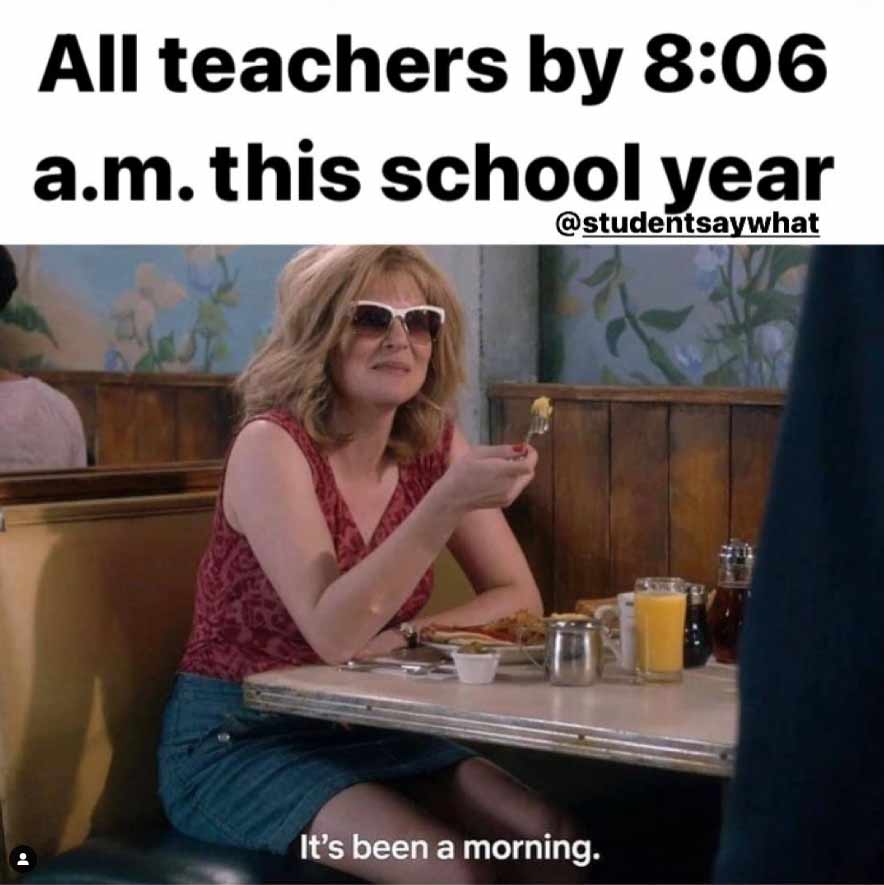
2. Stick to your normal routine
The mid-semester blues have set in; the point where teachers start to let up and loosen classroom rules. More chairs are being tipped back, GoNoodle is becoming the go-to, and all other classroom rules are starting to fall by the wayside. But, its crucial that you stick to your normal rules and routines. Your students will be able to see you letting up and chances are they will take advantage of that by starting to act up and distract your class. Hold firm in your routine as long as possible. This doesn’t mean you can’t work in some fun Thanksgiving games and activities, just don’t let the whole day (or week) become a free-for-all. Because we all know, once you lose a child’s focus before break it’s hard to get it back.

3. Don’t overwhelm yourself
Get prepared before you leave, but don’t overwhelm yourself with all of your grading and lesson planning at once. Remember, after Thanksgiving break you still have a few weeks left before the semester ends. Instead of trying to do it all, take care of everything that needs your immediate attention before you leave and make a solid plan on how your next few weeks will be when you return. This way you will be able to prioritize your work and keep on track before Christmas break.
4. Try to over-plan your break before it gets here
There is nothing worse than having a break that is so jam-packed you don’t have any time to relax and enjoy yourself. These days leading up to break when friends and family are texting and calling wanting to make plans, make time for them, but be careful not to make your schedule so full that you don’t have time for yourself. Remember, it’s okay to say ‘no’.
5. Think positive
This school year has been stressful for so many teachers, with the lack of subs, COVID protocols, the switch between in-person and remote teaching, etc. You work hard every single day and you’re exhausted, but you’ve got this! You have earned this much-needed break. Don’t feel guilty for looking forward to it or Christmas break as much as you are.
Have a happy and safe Thanksgiving break!
This article is furnished by California Casualty, providing auto and home insurance to educators, law enforcement officers, firefighters, and nurses. Get a quote at 1.866.704.8614 or www.calcas.com.

by California Casualty | Educators |
Reading can transport children to far-off lands, introduce them to beloved characters, and entertain them for hours. It also can boost their vocabulary, increase their attention span, and set them up for academic success.
Yet many children today spend more time on a device than with a book. Here are some strategies that parents can use to cultivate a love for reading with their children.
Teachers, this is a great article to share with your class parents.
Make reading a daily habit.
Set a regular time in your child’s schedule to read, even if it’s just 5-10 minutes. It could be part of their bedtime routine during weekdays or quiet time on weekends. Read aloud to your children if they can’t yet read, or even if they can. Importantly, let your children see you read, too.
Create a special space for reading in your home.
Reading is pleasurable. Your special spot for reading should be, too. Find a place in your home that is quiet and away from TV or computers. Add a comfortable chair and a light. Include a table so that you can enjoy some tea or hot cocoa as you read. Lay a blanket on the back of the chair so you can wrap yourself in warmth. For young children, create child-sized spaces with books on low shelves or in floor bins so kids can easily reach them.
Make reading a family affair.
Schedule a family reading day. Make special book-themed snacks, read the book, and watch the movie. Incorporate books into your holiday traditions. Play reading bingo. Help your children find books on topics that interest them, or with characters to whom they can relate. Choose a fun family project that you need to research using books. Involve your children in finding the information and completing the project with you. Read the same book your child is reading so you can talk about it. You can even take turns reading aloud.
Tip for a reluctant reader: Read aloud but stop at an exciting cliffhanger. Then put the book down and walk away. Your child might just pick it up to find out what happened!
Keep track of books to read.
Make a list of the books your child wants to read. Ask friends for suggestions. Look up other books of authors your child likes. Keep a log of what your child has read with notes if you’d like. It’s fun to look at that list after a few months. You can set up a Pinterest board with the books they’ve read, too. Ask your child to set a goal for how many books he/she wants to read. When your child reaches the goal, celebrate!
Visit the library and bookstores.
Take regular trips to get more reading material. The library is a wonderful place to start, plus it’s free. Try the used bookstore, too, where you can get great bargains. Choose books that are fun and engaging and books that help children develop important skills. The most popular authors are often great storytellers.
Carry a book or ebook reader.
Reading is a great way to pass the time. Keep one (or more) books or an e-reader in your car or bag so your child can read while traveling, waiting in line at the bank, or anytime there is downtime. Keep your child’s latest read in his/her backpack so he can take advantage of downtime at school.
Start a book club.
A parent-child book club can be great fun. Make the book choice one that fosters lively discussion. Relate it to your personal lives. Ask for honest reviews of the book. Bring star stickers for the kids to use as ratings. Incorporate a fun snack that is related to the book.
Tip: Find free & low-cost books here.
Attend storytimes, author visits, and book events.
Join other book lovers to celebrate reading at fun events hosted at your local library, bookstore, or in your community. Look for local events held during National Read Across America Day on March 2.
Join an online community.
One popular site for finding book recommendations is Goodreads, but you have to be 13 or older to join. (Adults can join and search for children’s books, however.) For younger readers, try Biblionasium, a free and safe community for readers in grades K-8. The site is searchable by reading level and students may build their own virtual bookshelf. DogoBooks is a paid site that hosts the National Geographic Kids Book Club and features contests and giveaways.
This article is furnished by California Casualty, providing auto and home insurance to educators, law enforcement officers, firefighters, and nurses. Get a quote at 1.866.704.8614 or www.calcas.com.

by California Casualty | Educators |
You spend a lot of time planning meaningful instruction. So, when a rowdy student upends a lesson, it can be frustrating.
Classroom management is one of the trickier parts of teaching. It’s something you learn on the job; the average teacher training program devotes just about 8 hours to the topic.
The good news is that it’s never too late to establish rules and routines. Whether you’re a veteran educator or a new teacher, here are some behavior management tips to take charge of your class.
Tip #1: Set up conditions so that misbehavior is less likely.
Give your students the greatest chance for success by creating an environment that encourages best behavior.
-
- Greet students at the door and by name. This sets a positive tone and connects with them at the start.
- Set up the physical flow in the classroom so there are no bottlenecks or potential areas of conflict. A well-organized classroom makes a difference.
- Give students a choice in their seating but move them if they are unable to behave or get their work done.
- Add creative areas such as bean bags, couches and rugs as choices for students.
- Use calming background music or quiet zones to set the mood during independent work.
- Schedule brain breaks between lessons. This will help to prevent “learning burnout” when misbehavior may occur.
- Build relationships with your students to understand their individual stress points. Give them a safe mental space to learn.
- Incorporate lessons on social-emotional learning (SEL) to help students develop the skills that will help with behavior.
Tip #2: Practice rules and procedures.
Set expectations with your students so that they know the standards for behavior in your classroom.
-
- Make sure your classroom rules state the desired behavior and not what students shouldn’t do. For example, use “Speak in an inside voice” rather than “Don’t yell.”
- Keep your list of rules short – no more than five if possible. Develop the rules together with the students so that they are invested in them.
- Procedures are different from rules. Procedures are how students line up, transition from one activity to another, move around the room, hand in homework, etc. Make sure you have a clear idea of your procedures, then teach those to your students.
- Make sure directions are clear and easy to follow.
- Notice where your current class tends to “fall apart” in following procedures. List the steps needed and give students a chance to practice. Incorporate plenty of praise.
- Say what you mean and mean what you say. Students know when teachers are inconsistent and can take advantage of those opportunities.
Tip #3: Prepare for disruptions.
Interruptions and transitions offer opportunities for student misbehavior. Being prepared is your best defense.
-
- Students aren’t the only ones distracted during transitions. Teachers are too, as we prepare for the next part of the lesson. Take time to observe your students’ transition before you organize your own. This will allow you to intervene if needed.
- Provide a five-minute warning for a transition.
- Students move at different speeds. The ones who arrive first to the carpet look for something to amuse themselves, such as pulling hair, etc. Make sure they know what is allowed during that “downtime.”
- Similarly, provide specific ideas for early finishers so they’re not just sitting at their desks, wandering around the room, or bored.
Tip #4: Use creative techniques to get attention.
Make sure that you have the attention of the full class before giving instructions. There are many ways to get students attention. Choose one main way, but you can vary it depending on the situation or just to create interest.
-
- Use sound: ring a small bell or bring in wind chimes or a rain stick. The more unusual sounds might pique student interest.
- Use visual cues: flick the lights or use a hand signal such as the peace sign. Hold your fingers up and, as students notice, they stop talking and hold their hands up too.
- Clap out a pattern that the class then has to duplicate.
- Try the call and response method:
- Teacher: (in a singsong voice) “Oh class.” / Class: “Oh yes?”
- Teacher: “1, 2, 3, eyes on me.” / Class: “1, 2, eyes on you.”
- Teacher: “Hocus pocus.” / Class: “Everybody focus.”
- Teacher: “Macaroni and cheese.” / Class: “Everybody freeze.”
Tip #5: Set Up Rewards and Consequences.
Rewards for good behavior and consequences for bad behavior are effective. Remember to focus on the behavior and not the student.
Rewards:
-
- Catch students being good and praise the positive behavior to the class. “I really like that Emma is raising her hand.”
- Give out raffle tickets during a lesson to students who are actively listening and exhibiting the behavior you want. Then, host a weekly drawing for prizes.
- Reward a well-behaved class with a special snack or extra recess time or a chance at the classroom prize jar.
- Reward individual students with a homework pass, a chance to play a non-academic computer game, stickers, or a note of praise to the child’s parents. Be creative. Giving your student a chance to sit in the teacher’s chair or to go first all day are both coveted rewards that won’t cost anything.
Consequences:
-
- Use low-key responses first to get a misbehaving student’s attention. Look at them and pause. Stand near them. Say the student’s name and nothing else.
- Request the student to stop, using minimal words.
- Remove the object that is causing the behavior, if there is one.
- Don’t get angry. Count to 5. Then deliver a logical consequence. Be brief. When students are agitated, they are unable to process. Do not give them any chance for debate or negotiation.
- Have a buddy class where you can send a student who misbehaves. Set it up ahead of time with the other teacher.
- Avoid punishing the class for the actions of one student.
- Create an individual behavior plan for students with repeated negative behaviors.
Tip #6: Consider high-tech help for behavior management
There are technology tools on the market that can be used in classroom management. Here are some popular ones, many of which are free or include free elements.
-
- Stop-Go! – Using a traffic light, this free app is a timer. It works with your iPad or iPhone.
- ClassDojo – Students are assigned monster avatars in this free program. Their monsters get points for following class values set by the teacher. Teachers also can post photos and messages to parents.
- Too Noisy – This app comes in a free online version. It monitors the noise level in the classroom with a noise meter and changing graphics if the class is too noisy.
- The Great Behavior Game – You teach as usual, but assign timeouts or freeze students from earning points if they are disruptive. This game is designed for grades K-5.
- Classcraft – Classcraft gamifies behavior management with student avatars that earn special powers for making good choices. There are free and paid versions of this program.
Tip #7: Ask for help.
Remember that you don’t have to do this alone. You have great resources within shouting distance.
-
- Ask an experienced teacher to mentor you in behavior management.
- Start a support group for classroom management at your school and share challenges and ideas.
- Consider peer teaching. Another adult in the room can help.
- Remember that classroom management takes time and practice. Adjust your expectations and give yourself some grace.
Do you have a classroom management tip that isn’t on this list? We’d love to hear it. Share it with us and other Educators in the comments.
This article is furnished by California Casualty, providing auto and home insurance to educators, law enforcement officers, firefighters, and nurses. Get a quote at 1.866.704.8614 or www.calcas.com.

by California Casualty | Educators |
It’s spooky season!
Get your little monsters ready for a spooktacular good time and enhance their love of reading with these 13 fun and not-so-scary Halloween books.
1. Pete the Cat: Trick or Pete
Pumpkins, candy, and costumes! With flaps that reveal fun Halloween surprises, this Pete the Cat holiday story is sure to be a sweet treat for your little trick-or-treaters. Follow Pete as he goes trick-or-treating from house to house and discover what is waiting behind each door.
2. Room on the Broom
The witch and her cat are happily flying through the sky on a broomstick when the wind picks up and blows away the witch’s hat, then her bow, and then her wand! Luckily, three helpful animals find the missing items, and all they want in return is a ride on the broom. But is there room on the broom for so many friends? And when disaster strikes, will they be able to save the witch from a hungry dragon?
3. Creepy Pair of Underwear
Jasper Rabbit is NOT a little bunny anymore. He’s not afraid of the dark, and he’s definitely not afraid of something as silly as underwear. But when the lights go out, suddenly his new big rabbit underwear glows in the dark. A ghoulish, greenish glow. If Jasper didn’t know any better he’d say his undies were a little, well, creepy. Jasper’s not scared obviously, he’s just done with creepy underwear. But after trying everything to get rid of them, they keep coming back!
4. Creepy Carrots
Another fun tale of Jasper Rabbit! Jasper loves carrots—especially Crackenhopper Field carrots. He eats them on the way to school. He eats them going to Little League. He eats them walking home. Until the day the carrots start following him…or are they?
5. Little Blue Truck’s Halloween
Beep! Beep! It’s Halloween! Little Blue Truck is picking up his animal friends for a costume party. Lift the flaps in this large, sturdy board book to find out who’s dressed up in each costume! Will Blue wear a costume too?
6. The Little Old Lady Who Was Not Afraid of Anything
Once upon a time, there was a little old lady who was not afraid of anything! But one autumn night, while walking in the woods, the little old lady heard . . . clomp, clomp, shake, shake, clap, clap. And the little old lady who was not afraid of anything had the scare of her life!
7. The School is Alive!
In this first book in the series, Sam Graves discovers that his elementary school is ALIVE! Sam finds this out on his first day as the school hall monitor. Sam must defend himself and his fellow students against the evil school! Is Sam up to the challenge? He’ll find out soon enough: the class play is just around the corner. Sam teams up with friends Lucy and Antonio to stop this scary school before it’s too late!
8. How to Catch a Monster
Get ready to laugh along in this fun children’s monster book as a brave young ninja heads into the closet to meet the monster that’s been so scary night after night! But what if our monster isn’t scary at all? Maybe our hero is about to make a friend of the strangest sort…
9. It’s Halloween and I’m Turning Green
It’s Halloween, and you know what that means! Candy! Costumes! More candy! What would happen if a kid ate a million hundred pounds of chocolate in one night? One thing’s for sure—when the kids from Ella Mentry School go trick-or-treating, it will be a Halloween to remember.
10. The Witches
Grandmamma loves to tell about witches. Real witches are the most dangerous of all living creatures on earth. There’s nothing they hate so much as children, and they work all kinds of terrifying spells to get rid of them. Her grandson listens closely to Grandmamma’s stories—but nothing can prepare him for the day he comes face-to-face with The Grand High Witch herself!
11. Pumpkin Jack
The first pumpkin Tim ever carved was fierce and funny, and he named it Jack. When Halloween was over and the pumpkin was beginning to rot, Tim set it out in the garden and throughout the weeks he watched it change. By spring, a plant began to grow! Will Hubbell’s gentle story and beautifully detailed illustrations give an intimate look at the cycle of life.
12. The Vampire Bunny
Harold, the dog thinks the Monroes’ new pet rabbit is just a cute little bunny. But when the vegetables in the Monroes’ kitchen start turning white, Chester the cat is worried. Could Bunnicula be a vampire bunny? Chester will stop at nothing to protect the Monroes and their vegetables from the threat.
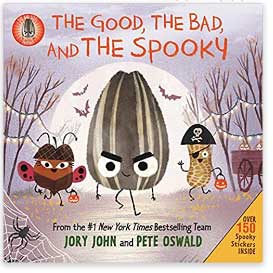
13. The Good, The Bad, and the Spooky
Halloween is the Bad Seed’s favorite holiday of the year. But what’s a seed to do when he can’t find a show-stopping costume for the big night? Postpone trick-or-treating for everyone, of course! Can he get a costume together in time? Or will this seed return to his baaaaaaaaad ways?
Want some crepy tunes for the background while you read? Don’t forget to listen to our Halloween Playlist on Spotify all month long. And if you need costume or classroom party or treat inspiration, we’ve got you covered.
Have a safe and happy Halloween!
This article is furnished by California Casualty. We specialize in providing auto and home insurance to educators, law enforcement officers, firefighters, and nurses. Get a quote at 1.866.704.8614 or www.calcas.com.








